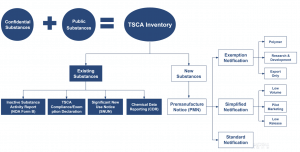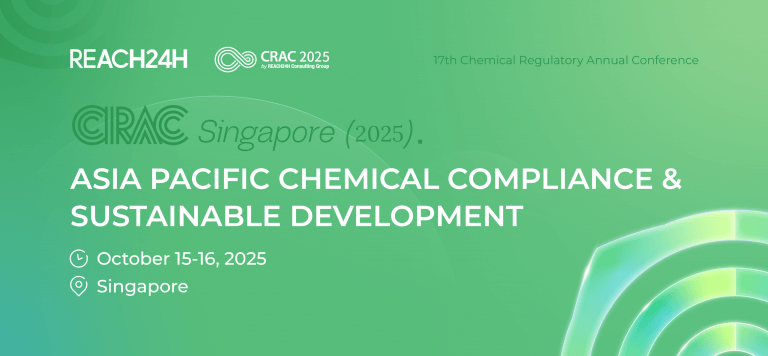In recent years, global trade has faced increasing uncertainty. Beyond visible trade measures like tariffs, technical barriers have emerged as major challenges for companies involved in cross-border business, especially in the chemical industry. For companies exporting chemicals to the United States, compliance with the Toxic Substances Control Act (TSCA) has become an invisible but critical hurdle. As trade policies fluctuate, TSCA compliance remains a long-term, non-negotiable requirement for market access.
What Is TSCA?
The Toxic Substances Control Act (TSCA) was enacted by the U.S. Congress in 1976 and came into force in 1977. It serves as the cornerstone regulation for managing industrial chemicals in the U.S., implemented by the Environmental Protection Agency (EPA) in cooperation with U.S. Customs and Border Protection (CBP).TSCA aims to protect human health and the environment from unreasonable risks posed by chemicals in commerce, considering environmental, economic, and societal impacts.In 2016, TSCA underwent its first major reform through the Frank R. Lautenberg Chemical Safety for the 21st Century Act, which strengthened the EPA’s authority and scientific standards for chemical risk assessment and management.
Core TSCA Compliance Principles
Unlike simplistic "toxic vs. non-toxic" classifications, TSCA compliance hinges on whether a substance is listed in the TSCA Inventory, which currently includes approximately 86,847 substances:
- Existing Substances: Already listed in the TSCA Inventory, which includes both a public portion (~85%) and a confidential portion (~15%).
- New Substances: Not listed in the TSCA Inventory and must undergo the Pre-Manufacture Notice (PMN) process before manufacture or import.
 Following the Lautenberg Act, the EPA is required to implement a science-based, risk-prioritized evaluation framework for both existing and new chemicals, which includes:
Following the Lautenberg Act, the EPA is required to implement a science-based, risk-prioritized evaluation framework for both existing and new chemicals, which includes:
- Systematic hazard and exposure assessments
- Risk-based prioritization
- Lifecycle risk management
TSCA Applicability
TSCA applies to a broad range of chemicals:
- Organic substances
- Inorganic substances
- Polymers
- UVCBs (Unknown or Variable composition, Complex reaction products, and Biological materials)
- Microorganisms
- Mixtures
- Intentionally released substances in articles (e.g., ink in a pen cartridge)
TSCA Exemptions
Certain substances are regulated under other U.S. laws and thus excluded from TSCA, including:
- Pharmaceuticals
- Cosmetics
- Nuclear materials
- Pesticides and agrochemicals
- Tobacco and tobacco products
- Food and food additives
Compliance Requirements for Existing Chemicals
Compliance Statement
Importers must state that chemical substances, mixtures, or articles with intentional release comply with TSCA regulations. This applies to all TSCA-covered substances except for tobacco, tobacco products, and non-intentionally released articles.
Exemption Statement
Required for imports of substances regulated under other laws (e.g., pesticides, nuclear materials, pharmaceuticals), confirming they are outside TSCA's jurisdiction.
Significant New Use Notice (SNUN)
If a listed chemical is flagged with an “S” for significant new use, an SNUN must be submitted to the EPA 90 days before the intended activity.
Chemical Data Reporting (CDR)
Manufacturers or importers must report chemical data every four years if annual volumes exceed
- 25,000 lbs (≈11.3 metric tons) for general substances, or
- 2,500 lbs (≈1.13 metric tons) for certain specific substances.
Reporting information includes production volumes, sites, and exposure details.
Compliance Requirements for New Chemicals
New chemicals (not in the TSCA Inventory) require a Pre-Manufacture Notice (PMN) at least 90 days prior to manufacturing or importing.However, certain exemptions may apply, such as:
- Low Volume / Low Release / Test Marketing Exemptions
- Polymer Exemptions
- Research and Development Exemptions
These allow companies to bypass full PMN procedures under defined conditions.
Strategic Approach for Exporters
To ensure smooth U.S. market entry, chemical manufacturers and exporters should:
- Determine Applicability: Confirm whether the product is under TSCA jurisdiction.
- Identify Substance Type: Check if the substance is listed in the TSCA Inventory.
- Submit PMN if Needed: For new chemicals not meeting the exemption criteria.
- File SNUN for New Uses: For listed substances with significant new use designations.
- Make the Right statement: Submit either a compliance or exemption statement to U.S. Customs.
- Report Data (CDR): If annual volumes exceed reporting thresholds.
Why TSCA Matters More Than Ever
Combined with trade frictions like the Trump-era tariffs, TSCA compliance represents a double burden on foreign chemical exporters. However, companies that proactively navigate TSCA requirements will gain a decisive edge in the U.S. chemical market, minimizing risk and maximizing competitiveness.
TSCA Compliance Services by REACH24H
Our team of experts offers end-to-end TSCA regulatory support, including:
- TSCA Inventory (public & confidential) search
- TSCA compliance or exemption statements
- Notice of activity (Form B)
- Strategic compliance assessments
- Pre-manufacture Notice(PMN)
- Exemption analysis (polymer, R&D, etc.)
- Low Volume / Low Release / Test Marketing Exemptions
- Significant New Use Notices (SNUNs)
- CDR reporting
- TSCA compliance analysis reports





